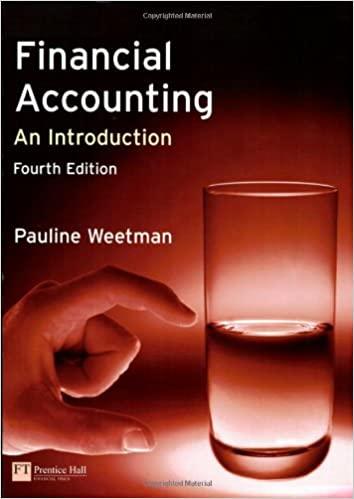Question
1 Marks: 1 Auditors should design the written audit plan so that Choose one answer. a. Substantive tests prior to the balance sheet date will
1 Marks: 1 Auditors should design the written audit plan so that Choose one answer. a. Substantive tests prior to the balance sheet date will be minimized.The audit procedures selected will achieve specific audit objectives. b. The audit procedures selected will achieve specific audit objectives. c. All material transactions will be selected for substantive testing. d. Each account balance will be tested under either tests of controls or tests of transactions. Question 2 Marks: 1 If sales were overstated by recording a false credit sale at the end of the year, where could you find the false "dangling debit"? Choose one answer. a. Inventory. b. Accounts receivable. c. Cost of goods sold. d. Bad debt expense. Question 3 Marks: 1 An audit team uses the assessed risk of material misstatement to Choose one answer. a. Determine the acceptable level of detection risk for financial statement assertions. b. Identify transactions and account balances where inherent risk is at the maximum. c. Indicate whether materiality thresholds for planning and evaluation purposes are sufficiently high. d. Evaluate the effectiveness of the entity's internal control policies and activities. Question 4 Marks: 1 Management fraud generally refers to Choose one answer. a. Violations of GAAS. b. Unintentional mistakes. c. Intentional distortions of financial statements. d. Illegal acts. Marks for this submission: 0/1. Question 5 Marks: 1 The risk of material misstatements is composed of which audit risk components? Choose one answer. a. Inherent risk and detection risk. b. Control risk and detection risk. c. Inherent risk, control risk, and detection risk. d. Inherent risk and control risk. Marks for this submission: 0/1. Question 6 Marks: 1 In the preparation of an audit plan, which of the following items is not essential? Choose one answer. a. The preparation of a budget identifying the costs of resources needed. b. Assessment of inherent risk. c. An understanding of controls established by management. d. A review of material from prior audits. Question 7 Marks: 1 Which of the following statements best describes auditors' responsibility to detect errors and frauds? Choose one answer. a. Auditors are responsible to detect material errors, but have no responsibility to detect material frauds that are concealed through employee collusion or management override of the internal control structure. b. Auditors have no responsibility to detect errors and frauds unless analytical procedures or tests of transactions identify conditions causing a reasonably prudent auditor to suspect that the financial statements were materially misstated. c. Auditors should design an audit to provide reasonable assurance of detecting errors and frauds that are material to the financial statements. d. Auditors have no responsibility to detect errors and frauds because an auditor is not an insurer and an audit does not constitute a guarantee. Question 8 Marks: 1 An audit plan contains Choose one answer. a. Specifications of procedures the auditors believe appropriate for the financial statements under audit. b. Documentation of the assertions under audit, the evidence obtained, and the conclusions reached. c. Specifications of audit standards relevant to the financial statements being audited. d. Reconciliation of the account balances in the financial statements with the account balances in the client's general ledger. Question 9 Marks: 1 An auditor who discovers that client employees have committed an illegal act that has a material effect on the client's financial statements most likely would withdraw from the engagement if Choose one answer. a. The illegal act is a violation of generally accepted accounting principles. b. The illegal act was committed during a prior year that was not audited. c. The auditor has already assessed control risk at the maximum level. d. The client does not take the remedial action that the auditor considers necessary. Question 10 Marks: 1 Which of the following statements best describes the audit team's responsibility for detecting a client's illegal acts? Choose one answer. a. The audit team must design tests to detect all illegal acts that directly affect the financial statements. b. The responsibility for detecting illegal acts exactly parallels the responsibility for errors and fraud. c. The audit team must design tests to obtain reasonable assurance that all illegal acts with direct material statement effects are detected. d. The audit team must design tests to detect all material illegal acts that indirectly affect the financial statements. 
Step by Step Solution
There are 3 Steps involved in it
Step: 1

Get Instant Access to Expert-Tailored Solutions
See step-by-step solutions with expert insights and AI powered tools for academic success
Step: 2

Step: 3

Ace Your Homework with AI
Get the answers you need in no time with our AI-driven, step-by-step assistance
Get Started


